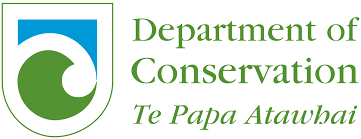Hector’s Dolphins (new Zealand Dolphin)
Hector’s dolphins are the smallest and one of the rarest marine dolphin in the world, they are only found right here in New Zealand – Akaroa is one of the only places in the world where you can see them close to shore as they happily reside here in our turquoise and emerald green waters of our stunning marine reserve. They feel safe here and use our sheltered waters as a nursery to breed and protect their young.
Surrounded by steep cliffs, Akaroa harbour lies in the flooded crater of an extinct volcano, providing a sheltered location for dolphin encounters but these dolphins need our help…
Hector dolphins are classed as an endangered marine mammal, they live in the sea but breathe air. They are very sacred to the area, the Maori name for hector dolphins translates as treasure of the sea!
Banks Peninsula Marine Sanctuary
Banks Peninsula, with its many bays and natural harbours at Akaroa and Lyttelton, was declared New Zealand’s first marine mammal sanctuary in 1988.
The sanctuary was extended in 2008, and now reaches beyond Banks Peninsula – along the coasts to the north and south – and 12 nautical miles off-shore. Set netting is banned in the area for most of the year.
The sanctuary was created to protect the Hector’s dolphin, though it is also home to other endangered species, including hoiho / yellow-eyed penguin, kororā / white flippered penguin and kekeno / New Zealand fur seal.
Since the reserve was created, Hector’s dolphin numbers on the peninsula have risen to around 1000 – the result of both public and community conservation work.
Urgent Conservation
Hector’s Dolphins are Endangered due to deaths in fishing nets – gill nets and trawl nets. Maui dolphin is Critically Endangered because there are only 55 Maui dolphins left in the world. This is less than 10% of the original population size.
Maui dolphin is teetering on the brink of extinction and Hector’s dolphins are continuing to slide in the same direction. With about 10,000 individuals today, the South Island Hector’s dolphin population is less than 30% of its original numbers. To make matters worse, the population is highly fragmented into small local populations and fishing nets are removing these populations one at a time. Areas where they used to be very common are now without NZ dolphins.
We know that removing fishing nets from their habitat makes a huge difference. At Banks Peninsula, gillnets are banned up to 4 nautical miles from shore and trawling up to 2 nautical miles. Thrust researchers have found that this has increased their survival by more than 5%. The Banks Peninsula dolphin population had been declining at 6% per year and is now almost stable.
Extending protection to all waters up to 100 m deep would allow Hector’s and Maui dolphins to recover.
Progress
Dolphin protection is not yet sufficient to provide effective protection. For example, around Banks Peninsula, on the east coast of the South Island, NZ dolphins range out to 20 nautical miles offshore but protection from gillnets only extends to 4 nautical miles (one nautical mile is 1.85 kilometres)
The NZ Whale and Dolphin Trust’s research has been an important driving force in reducing threats to NZ dolphin, including the North Island sub-species Maui dolphin.
What Needs to Be Done
Much better protection is needed to allow NZ dolphin populations to recover from the rapid population declines of the last three decades.
Maui dolphins are on the brink of extinction, with only about 55 individuals left. Experience with the baiji (Chinese river dolphin) and vaquita (Mexican porpoise) show that when you get to such a low population size, a species can suddenly go extinct. To avoid extinction of Maui dolphins, and to ensure NZ dolphins don’t keep sliding towards extinction, we need to extend protection to all waters less than 100 metre deep.


What Do They Look Like?
Of all the dolphins seen in New Zealand waters, Hector’s dolphins are the only ones with a rounded dorsal fin alot like a mickey mouse ear – all other species of dolphin found in New Zealand waters have pointy shaped fins so they are easy to identify. They also have distinctive black markings on their fins, tails, flippers and faces.
While common dolphins reach about 2.6 metres in length, Hector’s dolphins grow to only 1.5 metres long and weigh about 35 to 50 kilograms (males are smaller than females). They are so small you could fit them into a bathtub!
Behaviour
NZ dolphins live in waters of up to 100 m depth and have very large brains. This is reflected in their complex behaviour and social system. They live in small groups of 2-8 individuals, which sometimes get together into larger groups of 20-30, at times even 100 or so dolphins. The smaller groups of 2-8 individuals are usually made up of only males or only females and their calves.
Their social system is usually described as ‘fission – fusion’. In other words, if two groups of dolphins meet, they don’t necessarily split up into their original groups again but may go on to form new and different groups when they go their separate ways.
NZ dolphins eat red cod, yellow-eyed mullet, stargazer, squid and a range of other species.
Like most dolphins, NZ dolphins have a very slow reproductive rate. A female can expect to have her first calf when she is 7 to 9 years old, and she will have one calf every 2 to 4 years after that. They only live to about 25 years. That means an overall population growth rate of about 2%. In other words, a population of 100 NZ dolphins can grow by 2 individuals at most in any one year. That makes them very vulnerable to human impacts.
Interesting Facts About Our Hector Dolphins
The lungs of Hector’s dolphin are small, only about the size of human lungs, so they drown in about the same period of time a human would if they get tangled in set nets!
They use echo-location to locate their prey – it’s like seeing with sound.
The Hector’s dolphin was named after Sir James Hector, who was the curator of the Colonial Museum in Wellington (now Te Papa).He was the most influential New Zealand scientist of his time.
Dolphins send out a stream of high frequency clicking noises and when the sound strikes an object it bounces back and the dolphin can tell by listening what the object is – what kind of fish it is, how far away it is and how fast it is moving. In familiar areas, their echo-location is ‘turned off’, which means they cannot always detect dangers.
How Can I Help the Hector’s Dolphins?
If you would like to donate to the NZ Whale and Dolphin Trust they are would appreciate the help as they are doing their best
If you find stranded dolphins:
Report whale or dolphin sightings or strandings phone the DOC HOTline 24 hour emergency number:
0800 DOC HOTline (0800 362 468)

You Can Help!
-
Call 0800 DOC HOT (0800 362 468) immediately if you see anyone catching, harming or killing native wildlife. This is a FREE call when travelling in NZ
- Please don’t attempt to swim with dolphins but if you are swimming near dolphins, avoid wearing suntan lotion or insect repellent as chemicals can irritate dolphin’s eyes.
- Do not try to touch a Hector’s dolphin.
- If in a boat use a “no wake” speed within 300 metres of dolphins. Should you need to outdistance them, you may increase your speed gradually to a maximum of 10 knots.
- Do not feed dolphins. Human food is harmful.
- Keep their environment clean. Take your rubbish home, and if you find any floating at sea or on the coast, please pick it up.
If you See a Hector’s dolphin killed in a set net..
- Contact the Ministry of Fisheries on 0800 4 POACHER (0800 4 76224) if you see set nets being used within closed areas.
- If you accidentally catch or harm a dolphin you must report it as soon as possible to DOC or Mfish.
If alive:
- Keep the mammal wet, but don’t pour water down its blow hole
- Keep them upright
- Keep them shaded from the sun
